Zone Focusing with a Rolleiflex?
Talking about the Rolleiflex's most potent and undervalued feature.
Some cameras are overhyped, and some are underhyped.
In my opinion, the Rolleiflex gets the proper praise it deserves—most people know it's an iconic camera with masterful engineering, even if TLR cameras aren't their thing.
In the same breath, I think most people underhype its capabilities. For example, it has a reputation for being a "slow" camera. Admittedly, I've called it a "slow" camera myself. You don't see many street photographers or photojournalists carrying a Rolleiflex in the field today because it's "slow."
But what if I told you the version I own is a zone-focusing marvel?
The Rolleiflex 3.5f has a depth-of-field knob on the side, which is one of its undervalued features. Some models, Serial numbers from 3.5 F 2,290,000 and 2.8 F 2,437,000 onward, have a dual-scale focusing knob with distances in feet and meters. Mine only measures distance in feet, which is perfect for an American like me who measures distance incorrectly (at least to the rest of the world). 😉.
I don't know why more photographers don't talk about the Rolleiflex's zone-focusing capabilities, but allow me to bring it to light!
The depth-of-field knob on this Rolleiflex 3.5f makes it a masterful street photography camera. You can quickly focus on subjects by aligning the distance (on the knob) with the white band on the side of the knob. As you twist the knob, the numbers on the knob align with the white band. The length of the white band indicates the depth-of-field available on the distance scale (the distance of what will be in focus).
Here’s a video showing this in action. As I adjust the aperture, the white band increases and decreases.
It's a range. So, anything between x and x amount of feet will be in focus. As long as you're a good judge of distance, this works perfectly for quick shots or any documentary type of photography.
The higher your aperture (F 11-22), the larger your depth-of-field window becomes, making it easier to focus quickly since you have a wide range of distances to work with. The lower your aperture (F 3.5-8), the smaller your depth-of-field window is, and this takes a little longer to zone focus.
Typically, when I zone focus with my Rolleiflex, I keep it at F11 and up because it's easier and quicker to focus when you have a larger margin to work with.
The alternative to zone focusing is much different. You look down into the screen while adjusting the depth-of-field knob and wait for the subject to appear in focus on the screen.
For some, the screen isn’t bright enough to see what is or isn’t in focus. So, another way to focus is to line up your subject, pull out the magnifier, which allows you to see more adequately what is in focus, push the magnifier back in place, and then shoot. Again, it’s a longer process, making it a “slow” camera.
A few weeks back, I visited a cute European-influenced neighborhood close to my home and took all my pictures using this zone-focusing technique. I'm not sure what happened to the first two shots (white spots in the corner of the frame), but every other picture came out beautiful and crisp. I still looked into the focusing screen to ensure the composition was how I wanted it, but I didn’t rely on it to focus the shot.
All photos below were taken with a Rolleiflex 3.5 F using Ilford HP5 shot at box speed.
As long as the weather permits, I will challenge myself to shoot solely on my Rolleiflex while in NYC at the end of the month. Most, if not all, of my photos will be taken using this zone focusing technique. I’ve never done this before in such a fast city, but I am thoroughly looking forward to experimenting with this.
Hopefully, I taught you something you didn’t know about the Rolleiflex. If you have one, maybe this will inspire you to use it differently.






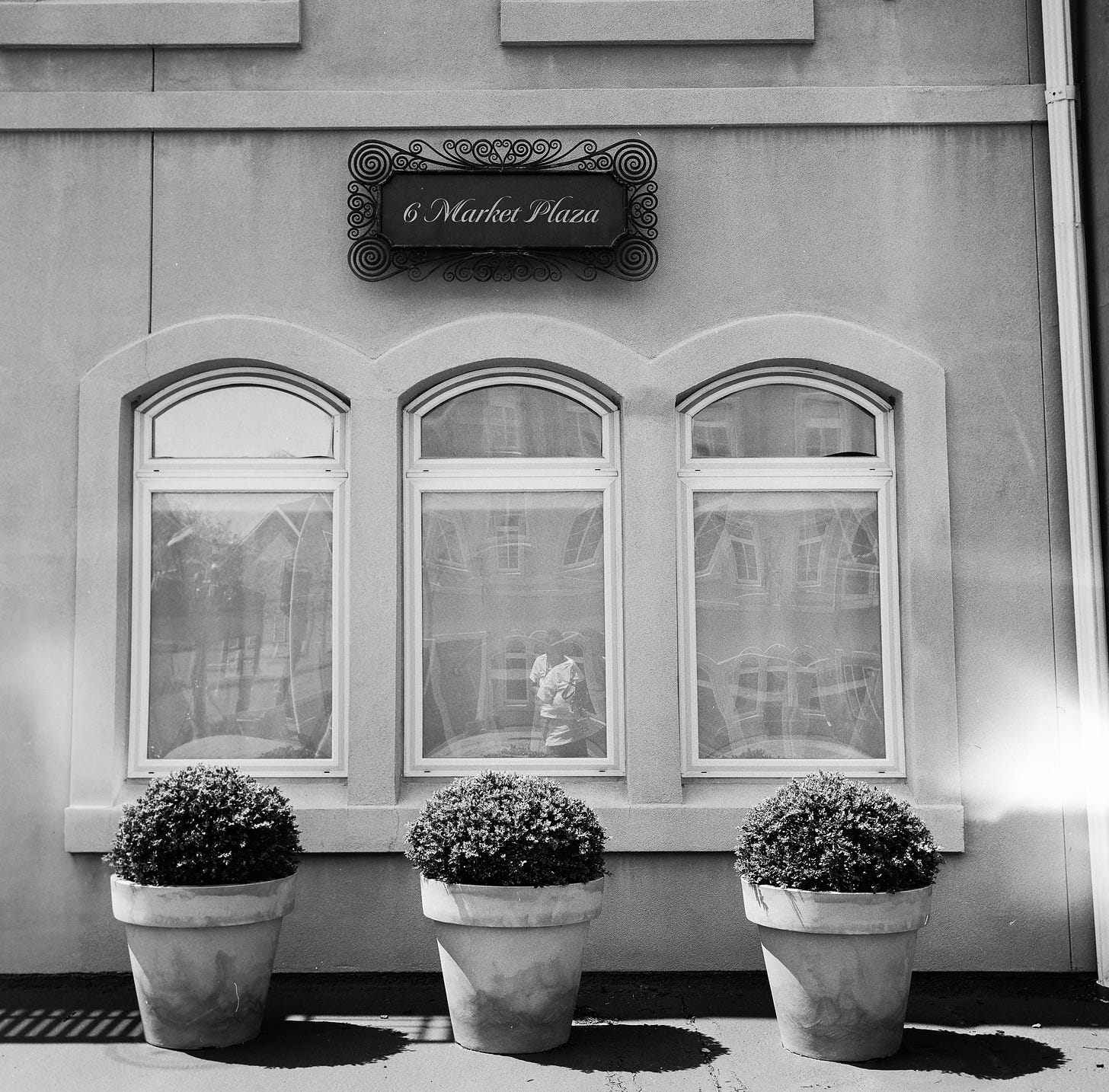



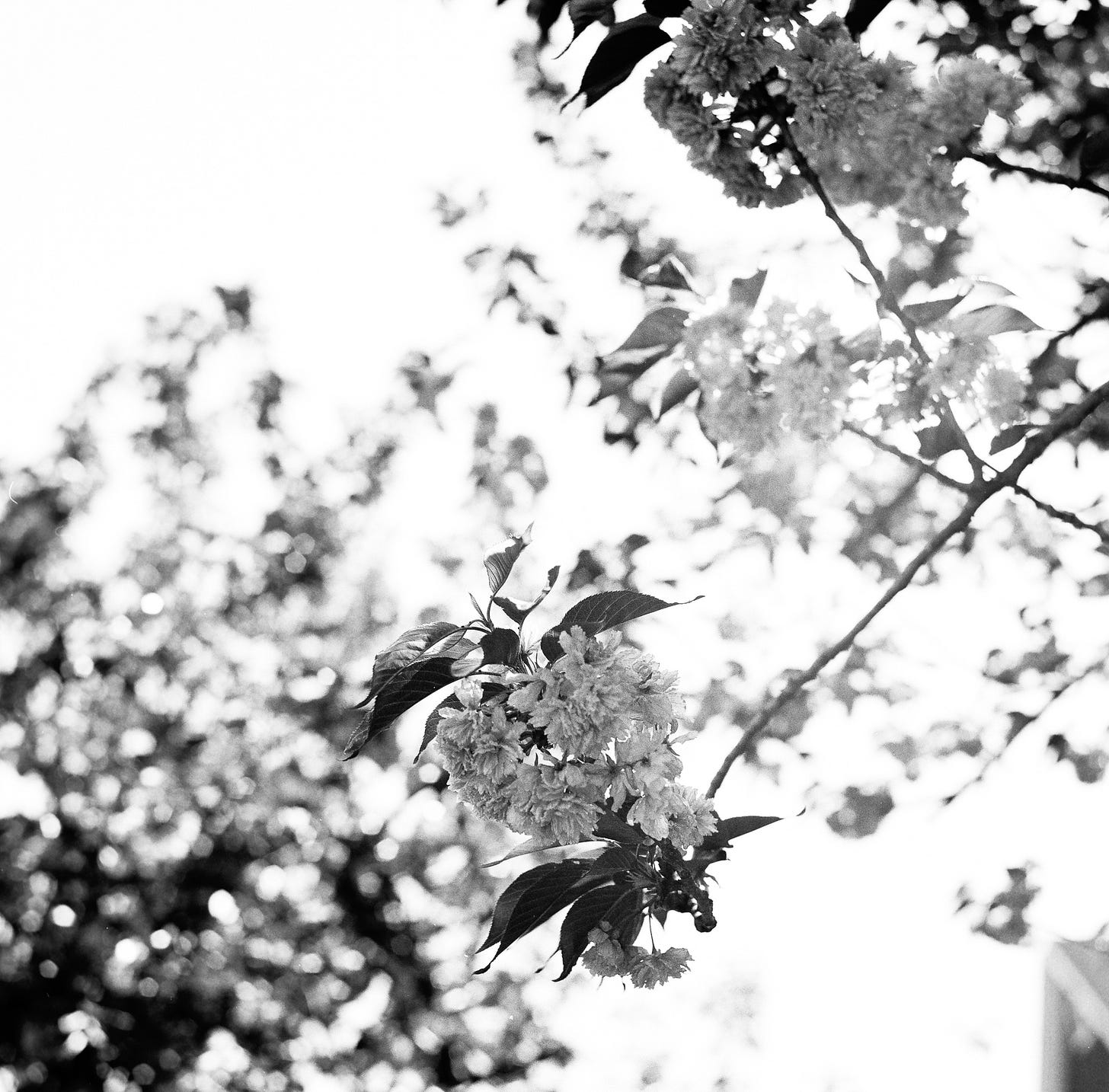

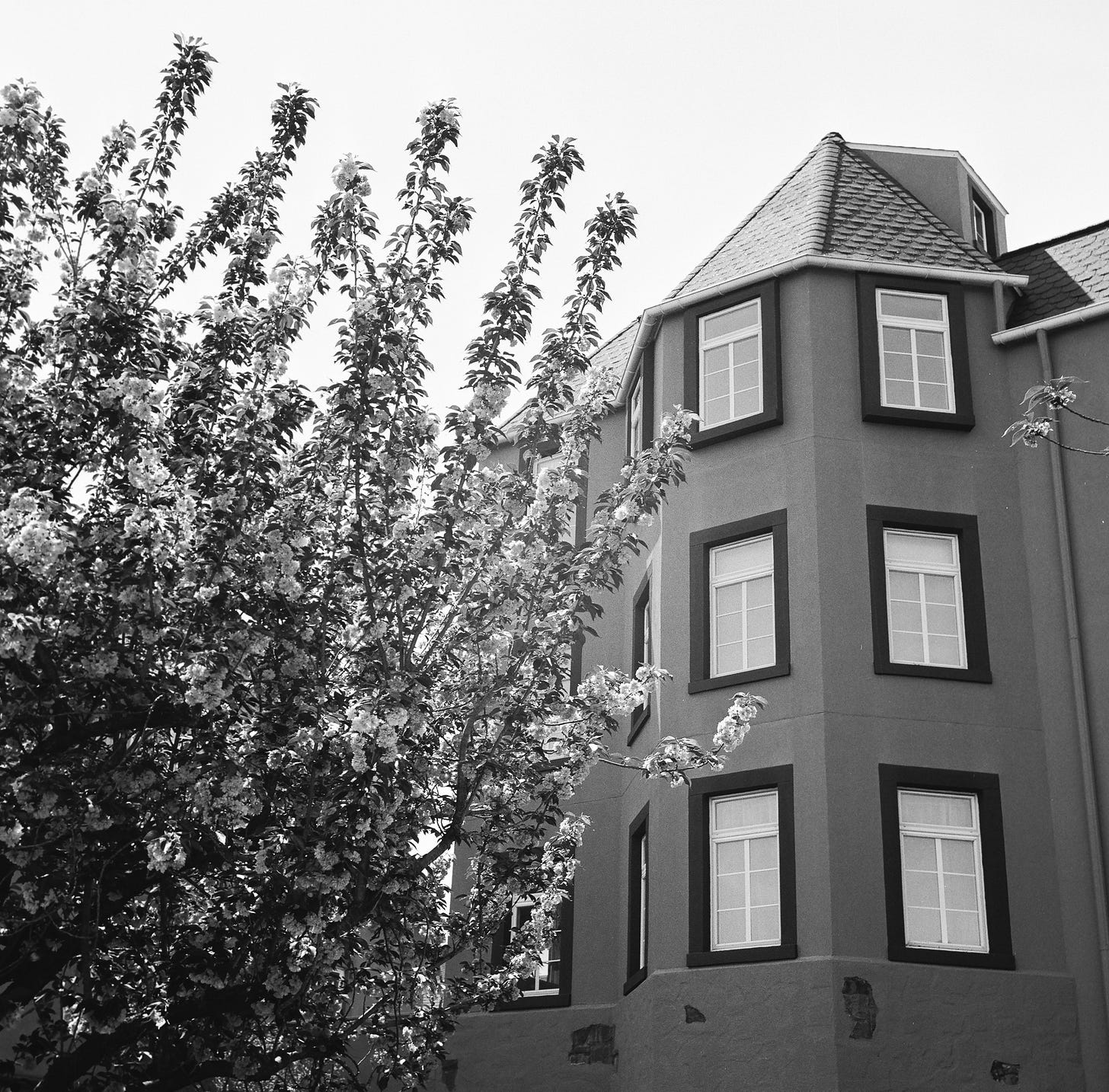

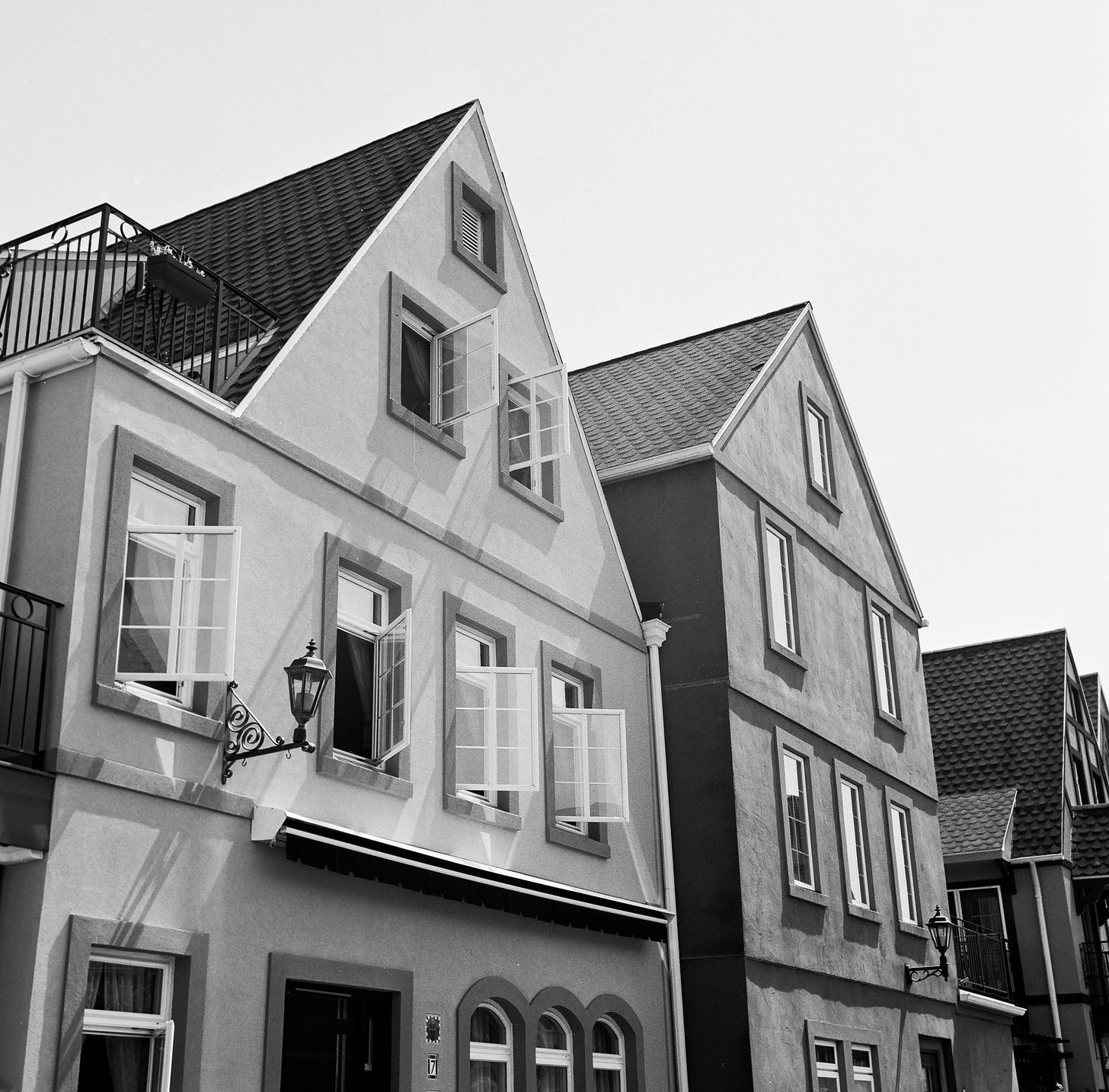
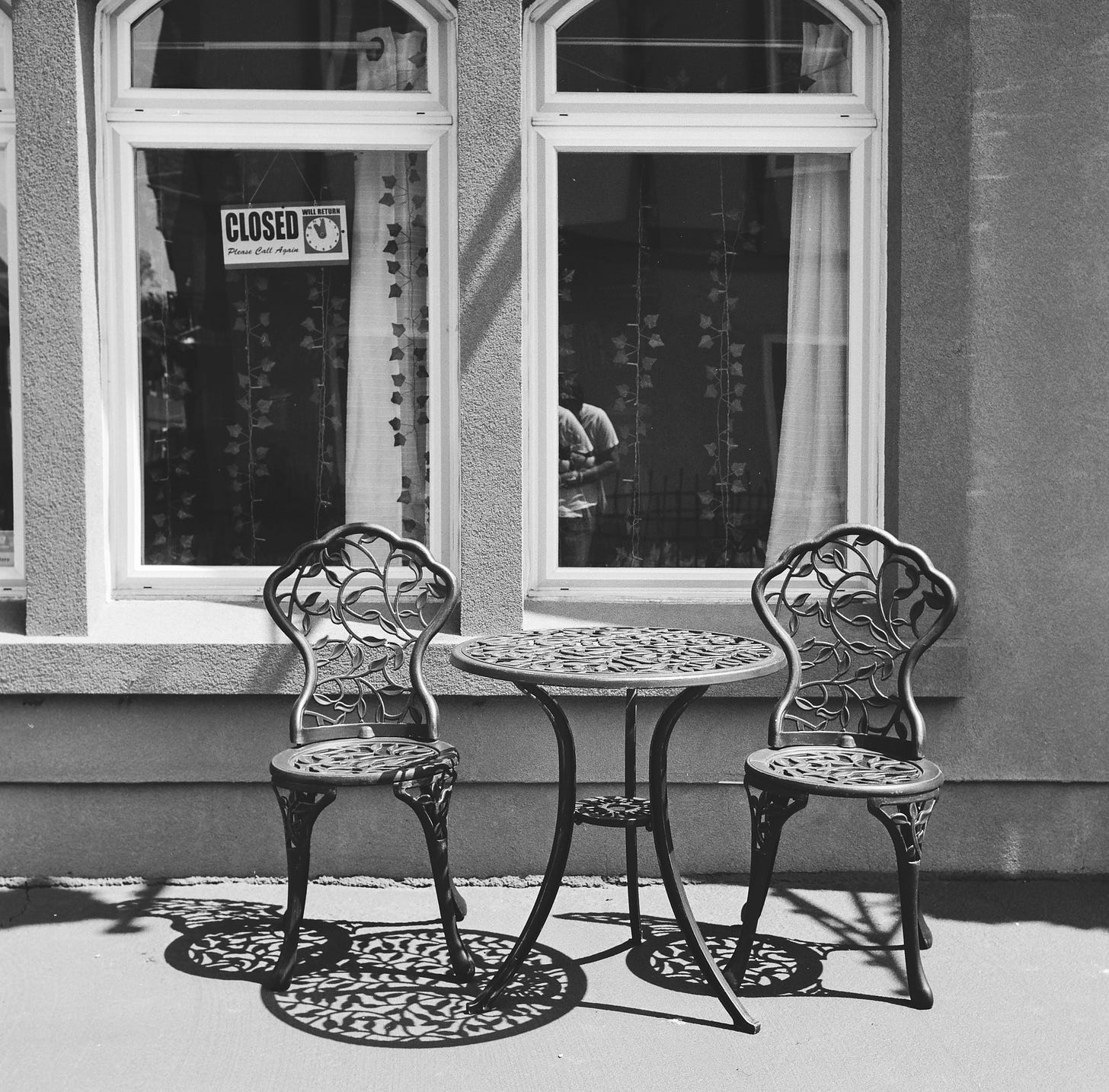
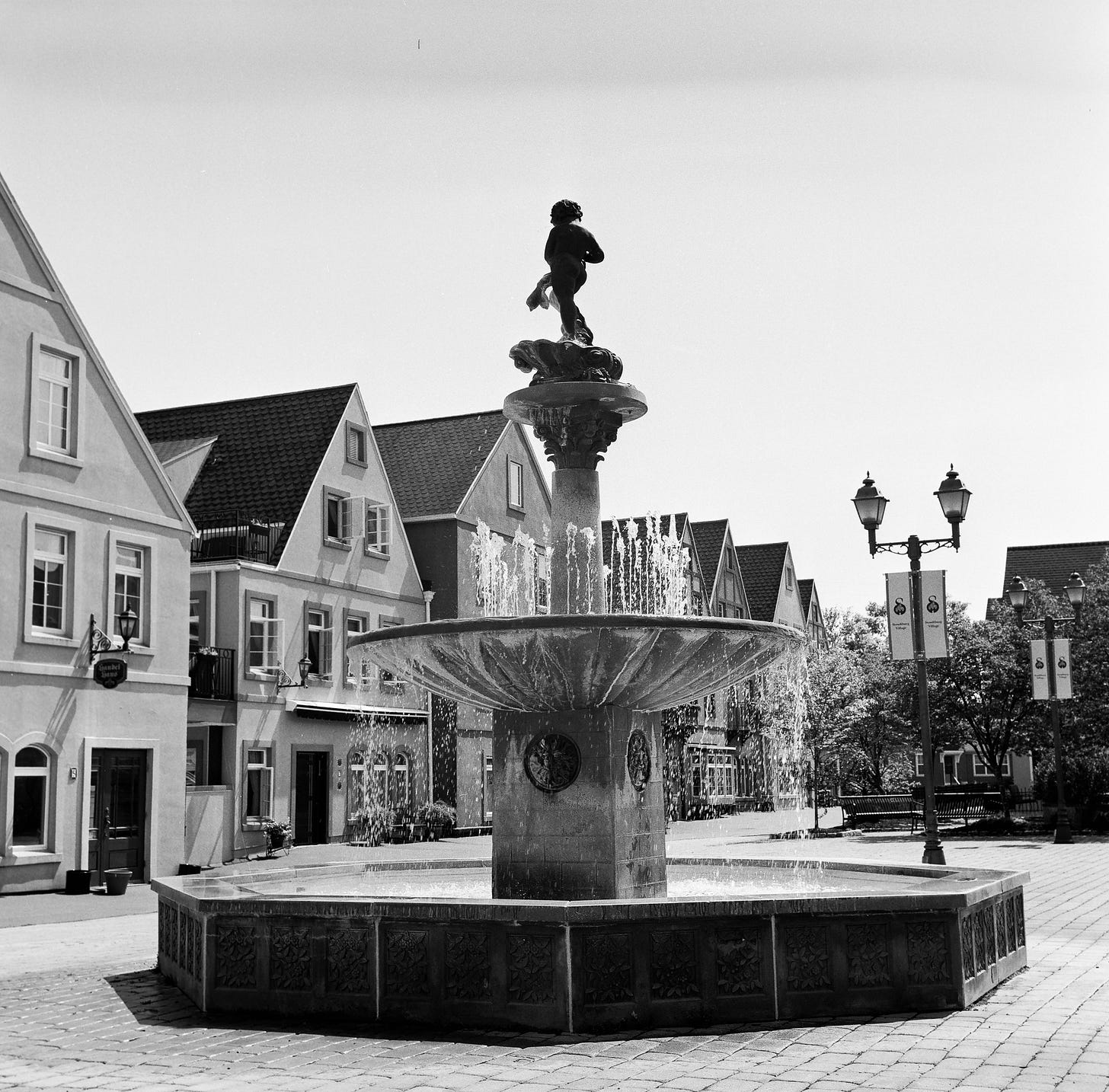


Lovely example images, that looks like a wonderful neighborhood to explore! I’m rubbish at zone focusing, it’s something I’ve been working on 😏
Zone focusing is the best! Once you learn it, there’s no coming back. I’m enjoying my IIIf leica because of it. Otherwise would be super slow. Great pics, Raz. Medium format is in another level of sharpness.